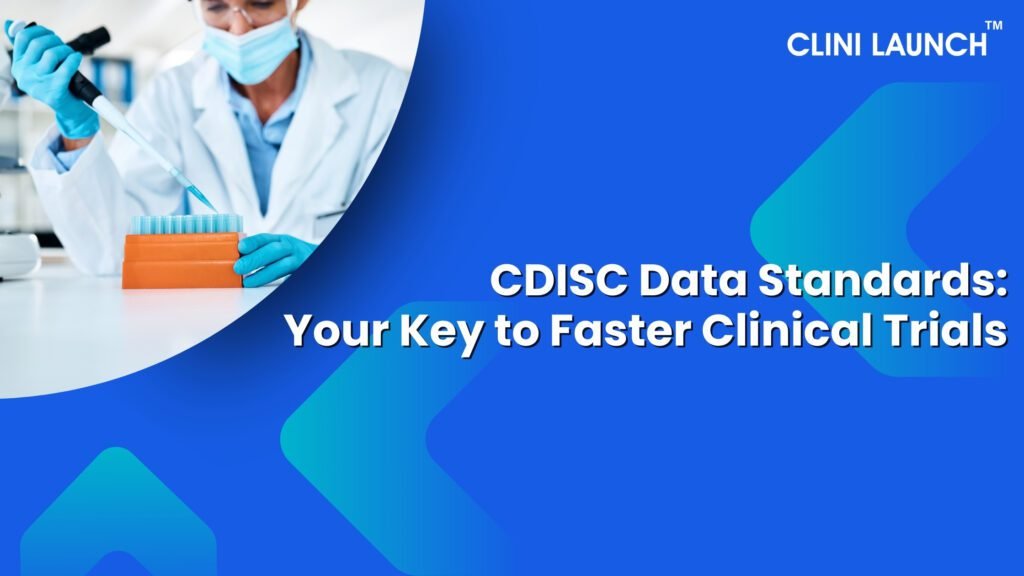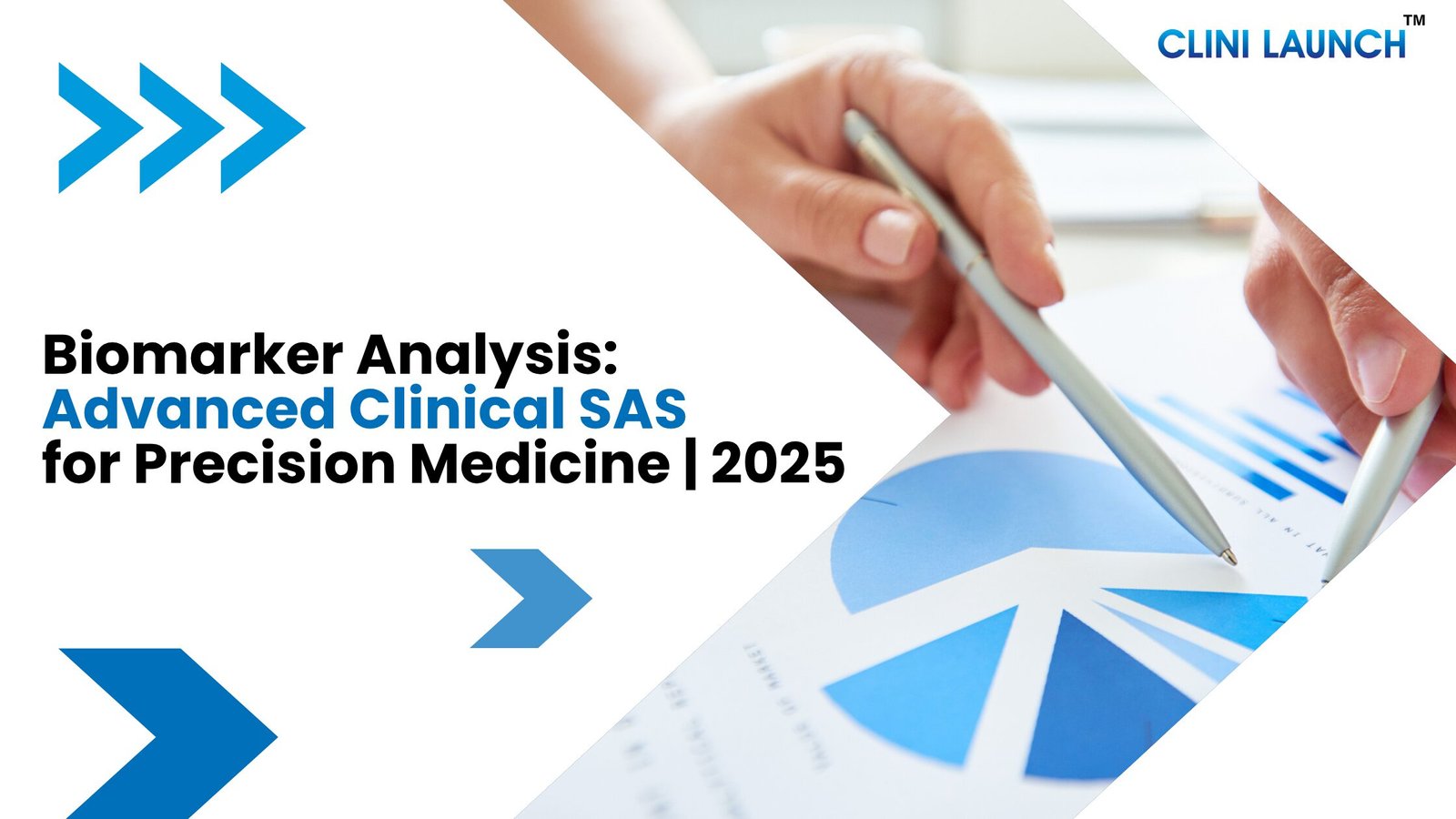CDISC Data Standards to Improve Data Quality in 2025
The standardization of data format has become crucial, and the Clinical Data Interchange Standards Consortium CDISC is committed to enhancing medical research. As data management and analysis are essential data standardization is crucial to ensure the validity and accuracy of crucial findings and results. The complexity in clinical trials requires greater collaboration between the different individuals involved in the case study.
CDISC data standards have collaborated with the FDA to establish data standards, which make it easier for regulatory reviewers to comprehend and process clinical trial data. This blog explores the importance of why CDISC data standards have become essential for clinical trials, highlighting its advantages and impact on the capability of medical research.
Enroll Now: Clinical SAS course
Understanding CDISC
During clinical research, the Clinical Data Interchange Standards Consortium (CDISC) is a global non-profit organization that expands universal standards for collecting data. Previously CDISC began, the absence of standardization of data made submission to regulatory agencies and sharing details globally become extremely difficult and extensive with delays from acceptance to agreement. CDISC standards were developed in response to the evolving needs to coordinate data formats and facilitate communication between different individuals like clinical trial sponsors and regulatory bodies.
CDISC Data Standards
The data standards developed by CDISC can be coordinated into four key categories:
- Basic: For defining data standards, CDISC refers to the basic standards as the core principles. The primary standards include all content such as clinical and non-clinical data, models, domains, questionnaires, scales, and ratings (QRS).
- Terminology: Within basics and therapeutic area standards, CDSIC terminology is an explanation created to offer standardized naming conventions for expressions or values.
- Data Exchange: These standards are generated to facilitate data sharing across diverse information systems, including those that have not enacted the basic CDISC in clinical research.
- Therapeutic Areas: This is a series of user guides (TAUGS) for therapeutic areas that serve as specified extensions for the basic standards.
These supplies will establish four standards within CDISC basic standards and offer insights into their implementation.
Study Data Tabulation Model (SDTM) in Clinical Trials

The SDTM in clinical trials are possibly the most well-recognized and widely enacted CDISC standard. It summarizes a global standard for how to structure and build content for data sets for individual clinical study data, while the Standard for Exchange of Nonclinical Data (SEND) is an implementation of SDTM clinical trials that offers the same structure to nonclinical data. SDTM and SEND are essential in the Food and Drug Administration (FDA) in the United States and the Pharmaceuticals and Medical Devices Agency (PMDA) in Japan requires SDTM.
Furthermore, for defining each segment of data as a domain the SEND and SDTM in clinical trials are essential. It enables the people reviewing the data to find the details they need with limited to no-study understanding. These domains offer structure to all data, including highly specialized fields like pharmacokinetics.
Read our blog in the topic of Promising 15 Branches of Pharmacology in Clinical Research
Benefits of CDISC in Clinical Trials

CDISC in clinical trials provides benefits such as enhancing the processes among stakeholders by offering a standardized framework, also optimized audits and regulatory approvals. Also, it mitigates risks and costs, while improving quality and gaining customer trust.
Enhancement of Processes
- Cooperation among stakeholders
- Clinical Data Interchange Standards Consortium CDISC plays a significant role in enabling cooperation among diverse stakeholders in the clinical research sector such as sponsors, regulatory authorities, researchers, CROs, and more. CDISC allows smooth and effective communication between these individuals by establishing standards that ensure clear and balancing data.
- This cooperative approach improves transparency and trust among the involved parties but also contributes to the overall efficiency of health product development like medicines by allowing faster and more informed decision-making.
- Companies can build a reputation for reliability, trust, and transparency by demonstrating a commitment to rigorous data collection, exchange, and analysis practices. As investors are more likely to support projects that demonstrate a solid methodological foundation, this can be particularly important when seeking funding or partnerships.
- CDISC is a crucial catalyst for more integrated and interconnected clinical research.
- Faster review and audit processes
- From the beginning of a clinical research project, review and audit processes are considerably accelerated when data are rendered CDISC-compliant.
- Auditors and regulatory reviewers can more easily hold the data because the structure of the data remains identical between each study. This enables them to easily navigate the datasets and comprehend the methodology used, thus reducing the time required to familiarize themselves with the data and study, and mitigating the time spent reviewing the data.
- This enables teams to concentrate on examining results rather than preparing documents for audits, thereby increasing overall project efficiency.
- Advancing regulatory approval processes
- CDISC data standards application also has a crucial impact on speeding up regulatory approval processes for clinical trials.
- The combination of the FDA and PMDA has made the CDISC standards mandatory for regulatory submissions. It makes it easy for manufacturers to comprehend and be experts in these standards.
- CDISC enables the submission of reports to regulatory agencies by providing uniform standards for the presentation of clinical data. These standards allow sponsors to structure their data consistently and in line with regulatory requirements, mitigating the risk of returns or requests for clarification from agencies.
- For efficient communication between researchers and regulators, CDISC supports mitigate review times and promotes faster decision-making on the approval of new treatments.
Mitigating Risk and Improve Quality
- Enhanced data quality
- By utilizing CDISC standards it ensures better integration and explanation of information from different sources, also mitigating data errors and inconsistencies.
- Scientists can ensure that data is presented in a clear and consistent way with the help of standardized formats like SDTM and Analysis Data Model (ADaM) and significantly enhancing transparency.
- Mitigated data management costs and delays
- For enactment of CDISC formats has an opening cost (staff training, changes of existing collection standards, data mapping transformation) the impact on mitigating following costs and delays linked to data management remains significant.
- CDISC streamlines data management processes by using coordinating standards right from the collection stage, through to data management and analysis. This interprets for some errors and inconsistencies and mitigating the time needed for data cleansing and validation.
- Additionally, the utilization of standardized and consequently compatible formats enabling the integration of data from different sources and systems, by speeding up the overall workflow and enhancing operational efficiency.
- Robust risk management: a reassuring feature
- The combination of CDISC standards allows better risk management throughout the clinical trial. Teams can more quickly analyze potential problems like data errors or non-conformities with standardized processes and well-structured data.
- Proactive risk management means that remedial action can be put in place quickly, minimizing the impact on the project and ensuring that the trial stays on track.
Main Challenges in CDISC Data Standards

Adopting CDISC standards in clinical trials presents notable challenges. Primarily, it often necessitates a complete overhaul of data collection processes, such as modifying questionnaires. Furthermore, a lack of understanding and familiarity with CDISC among research teams can lead to implementation errors, jeopardizing data quality. Resistance to change from teams and stakeholders also impedes effective adoption.
To address these, comprehensive training, coaching, and clear communication are crucial. Ongoing training on this evolving format is essential, and companies must invest in it and appropriate technology to fully grasp CDISC’s impact. Early collaboration with experts is a key strategy, as the path to CDISC standardization, while requiring effort, ultimately delivers significant time and resource optimization.
Conclusion
The Clinical Data Interchange Standards Consortium (CDISC) is pivotal in modern clinical research. By standardizing data formats, CDISC data standards addresses the growing complexity of trials and the need for seamless collaboration among stakeholders. Adopting CDISC enhances process efficiency, accelerates regulatory reviews, improves data quality, and reduces risks and costs. While implementation presents challenges, including the need to modify data collection processes and ensure team training, the long-term benefits of CDISC compliance are undeniable. Ready to streamline your clinical trials?
Clinilaunch Research offers expert solutions to help you navigate the complexities of CDISC in clinical research and ensure the success of your clinical research. Contact us today to learn more about our services and how we can support your journey.
Frequently Asked Questions (FAQs)
- What exactly are CDISC data standards and why are they so important in clinical research?
CDISC (Clinical Data Interchange Standards Consortium) data standards are a set of globally recognized formats for collecting, managing, and exchanging data in clinical trials. They are crucial because they facilitate better collaboration, streamline regulatory reviews by agencies like the FDA and PMDA, enhance data quality and consistency, and ultimately accelerate the drug development process.
2. What are the key categories of CDISC data standards mentioned in this blog?
The blog highlights four key categories of CDISC data standards: Basic (core principles including models and questionnaires), Terminology (standardized naming conventions), Data Exchange (standards for sharing data across different systems), and Therapeutic Areas (specific extensions for different disease areas).
3. What is SDTM and why is it considered a significant CDISC in clinical trials?
SDTM clinical trials is a widely adopted CDISC standard that provides a global framework for structuring and organizing data sets from individual clinical studies. It’s essential because regulatory agencies like the FDA and PMDA require it for submissions, enabling reviewers to easily understand and navigate study data, even without in-depth study-specific knowledge.
4. What are some of the main benefits of adopting CDISC standards in clinical trials?
The blog outlines several benefits, including enhanced cooperation among stakeholders, faster review and audit processes, accelerated regulatory approvals, improved data quality and consistency, mitigation of data management costs and delays, and robust risk management throughout the clinical trial lifecycle.
5. What are some of the challenges companies might face when implementing CDISC data standards, and how can they overcome them?
The main challenges include the need for a complete overhaul of existing data collection processes (like modifying questionnaires), a lack of understanding and familiarity with CDISC among research teams leading to errors, and resistance to change. These challenges can be overcome through comprehensive and ongoing training, effective coaching, clear communication strategies, investing in appropriate technological tools, and collaborating with CDISC experts from the early stages of clinical development.
References
A guide to CDISC standards used in clinical research
What Is CDISC and What Are CDISC Data Standards?
CDISC: Towards successful clinical trials!
https://efor-group.com/en/cdisc-towards-successful-clinical-trials





